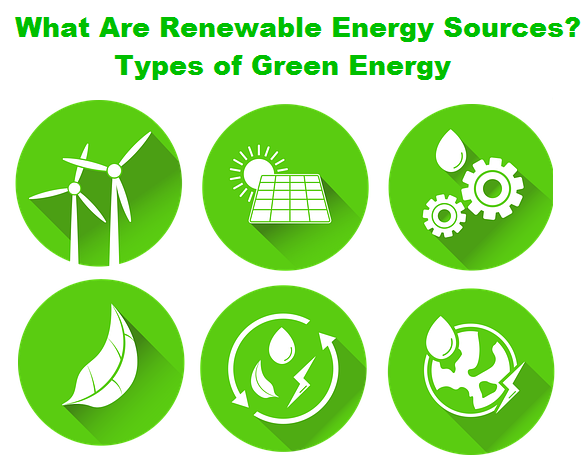INTRODUCTION
Environmentalism is a broad term encompassing environmental health and protection and being represented as ideology, philosophy, and social movement, all aspects covering the changing environment of the Earth.
For more information about Environmental Science read: What is Environmental Science and Why is it Important?
It is not a new concept. It has been going on for centuries. Dating back to history, the environmental movement began after the industrial revolution. The increased smoke pollution and chemical discharge led to the formation of modern environmental laws. In 1863, Britain’s Alkali Acts were passed in order to combat air pollution. In 898, Coal Smoke Abatement Society was established in response to coal combustion leading to heavy smoke in industrial cities. Some major events of the world wide environmental movement and its evolution have been listed below according to the decades.
Also check out: Environmental Science CSS, PMS, PCS Course Notes By Topic
ENVIRONMENTALISM IN THE 1940s-1950s
After world war II, the industrialization expansion was unprecedented that led to economic development. This revolution brought nature degradation. With each passing day, the people became environmentally conscious.
International Union for Conservation of Nature (IUCN) 1948 – This international organization was established in 1948 to protect and preserve nature in its original form. It is still working.
London Smog Episode 1952 And Clean Air Act 1956 – The release of airborne particles from coal combustion resulted in heavy smog in the city of London that is also known as the Great Smog of London. Many people died due to this smog. Great smog led to the formation of the Clean Air Act in 1956. It initially aimed to limit air pollution by controlling the emission of air pollutants.
ENVIRONMENTALISM IN THE 1960s-1970s
During 1960-1970, many environmental movements started and international environmental laws were passed and many historical events occurred.
Beginning of Modern Environmental Movement: The proper environmental laws and movements actually began in late 1960, with a new awareness about the various issues that our environment had began to face to due rapid industrialization in the world.
Establishment of WWF 1961 –The world wildlife Fund was created to protect animals and places from human developmental activities.
Rachel Carson – DDT Scandal, 1962 – Rachel Carson wrote a book Silent Spring in 1962 that discussed the negative impacts of DDT – pesticides on the environment especially on birds. Due to this book DDT was eventually banned.
Green Revolution in Agriculture 1966 – This revolution brought about an understanding of the negative impacts of uncontrolled and unregulated use of pesticides and fertilizers on the environment. It focused on improving agriculture using environmental friendly techniques. It also started to increase the overall yield of crops by introducing dwarf genes in the Asian Region.
NEPA 1969 – This was established in order to ensure environmental health by negotiation policies and acts.
First Earth Day 1970 – This day was celebrated in order to spread awareness among people that ultimately led to the creation of the biggest environmental movement in history.
Establishment of US EPA – It was created in 1970 in order to monitor human activities that are negatively impacting the environment of the Earth.
Beginning of EIA 1970 – the United States made it mandatory in response to increasing environmental awareness. Silent Spring by Rachel Carson played a huge role in this initiative.
Greenpeace, 1971 – A group of committed individuals tried to stop the American Nuclear Weapon test and this campaign was known as Greenpeace.
You might also like: Branches of Environmental Science – Interdisciplinary Field
ENVIRONMENTALISM IN THE 1980s-1990s
Environmental Justice Movement – In the late 1980s this movement began in response to the unjust treatment of low-income communities that were exposed to environmental pollution. It is considered an international movement that aims to encourage social, economic, and environmental justice by identifying the connection between health and environmental issues.
Later many conferences were organized that included Stockholm conference in 1972 (United Nations Conference on the Human Environment, 1972), Montreal protocol in 1987 (The Montreal Protocol on Substances that Deplete the Ozone Layer, 1987), and Kyoto protocol in 1997, etc. People became more aware of the environmental problems due to industrialization. The Chernobyl disaster in 1986 was a huge environmental issue. More awareness among people was raised through Brundtland Report in 1987 (Our Common Future, 1987).
Earth Summit 1992 – One of the major conferences was held in Rio De Janeiro known as Earth summit 1992. It aimed to discuss socio-economic development along with ways to solve problems concerning environmental protection.
ENVIRONMENTALISM IN THE 2000s-2010s
[Check out: Pakistan Environmental Protection Agency (review of IEE and EIA) Regulations (2000)]
Millennium Development Goals (MDGs) 2000- United Nation Millennium Development Goals were set in 2000 based on eight goals to be achieved before 2015.
Stockholm Convention on Persistent Organic Pollutants, 2001 – This international environmental treaty was started in 2001. It aims to reduce or limit the production, manufacturing, and utilization of persistent organic pollutants.
World Summit on Sustainable Development, 2002 – It was the second Earth Summit that aimed to discuss and organize sustainable development approaches. The key focus was solving problems of the growing population along with increasing demand for energy, water, and food resources.
Sustainable Development Goals, 2015 – United Nation General Assembly has set 17 Sustainable Development Goals (SDGs) to be achieved before 2030 that aims for the future through sustainable approaches.
Paris Agreement, 2015 – This international treaty on climate change deals with mitigation and adaptation to climate change. It aims to limit the global emission of greenhouse gases to reduce rising global temperature. A total of 191 ‘United Nations Framework Convention on Climate Change’ members are parties to the agreement.
During the period of 2015 to 2019 various COP were held at various locations around the world. All conferences discussed ongoing environmental crises and possible sustainable approaches.
ENVIRONMENTALISM IN THE 2020s
Environmentalism is continuously evolving and dealing with new environmental concerns including plastic pollution, genetic engineering, global warming, overpopulation, etc.
COP 26, 2021 – This year global united nation conference on climate change will be held in November in Glasgow hosted by the United Kingdom in response to UN Framework Convention on Climate Change and Paris Agreement. [Check out: COP26 – The 2021 UN Climate Change Conference Event and Pakistan]
COP27, 2022 – COP27 took place in Egypt. For more information about it, read: COP27: Introduction to Key Topics, Events and Its Importance.
Also check out: Top 15 Countries Already Bearing the Brunt of Climate Change
I hope you all liked this post! Please comment below if you have any suggestions, comments, or feedback! We at #envpk love hearing from our readers! Thanks!





16 Comments
Best work for the aspirants…! Keep it up
Thank you! Glad you liked our article. For more articles for CSS aspirants, check out this link: Environmental Science CSS, PMS, PCS Course Notes By Topic.
thank you so much .I need this type of content ,really it is very useful for us ,and again thanks a lot .Allah gives you reward for this.
You are welcome and we are glad you found the article useful! 🙂
Its wonderful …..work…as a css aspirant .i was searching data for environmental science your blog/website is really helping me ….keep it up….
Thank you! WE are glad you found the articles on our website useful, that is exactly what our aim is: to help people learn more about environment! We have a detailed list of articles covering almost all topics of the CSS Environmental Science Syllabus, you can find them here: Environmental Science CSS, PMS, PCS Course Notes By Topic
it’s really helpful to me! And thank you.
Glad to know you found it helpful! Thank you for your feedback and appreciation.
To the point. Thank you, Ma’am
Thank you & you are welcome.
Mam its really too helpful 💕
Thank you.
Thanks Mam,
For this broadcast material about css
Environmental science.
You are Welcome.
Lovely to read simple and comprehensive background. But one thing I want to update COP is not taking since 2015. It has been taking place since 1992.
Thank yo Furqan for your kind comment, and thank you for pointing out this mistake. Will surely correct it. 🙂